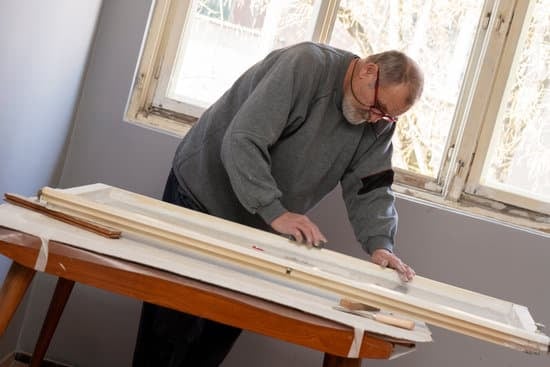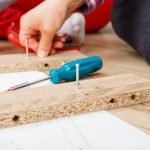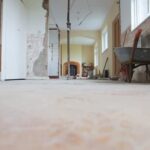The decision to spend money on home improvements is one that many homeowners grapple with. On one hand, making upgrades and enhancements to your property can enhance its overall value and functionality. On the other hand, it can be a costly endeavor that may not always yield significant returns. Therefore, it is crucial to approach home improvements strategically and make smart investments.
In this article, we will delve into the topic of whether or not you should spend money on home improvements. We will explore various factors that can help you make an informed decision, such as assessing your home’s current condition, understanding the financial value of improvements, considering the long-term benefits, prioritizing which enhancements are worth investing in, weighing DIY versus hiring professionals, exploring financing options, gauging future marketability, and analyzing real-life case studies.
By considering each of these aspects carefully, you will be able to make wise choices when it comes to allocating your resources towards improving your home. Whether you are planning to sell in the near future or simply want to enhance your living space for personal enjoyment, this article will provide valuable insights that can help guide your decision-making process. So let’s explore whether spending money on home improvements is a worthwhile investment or a financial burden.
Assessing Your Home’s Current Condition
Assessing the current condition of your home is an essential step in determining where to invest your money for home improvements. By thoroughly examining your property, you can identify areas that need attention and prioritize which projects will bring the most value to your home.
Inspecting Structural Integrity
One crucial aspect of assessing your home’s condition is inspecting its structural integrity. Look for signs of foundation issues, such as cracks in walls or uneven floors, as these can lead to more significant problems down the line if not addressed promptly. Additionally, check for any water damage or leaks, which can indicate potential issues with the roof or plumbing system.
Evaluating Energy Efficiency
Energy-efficient upgrades have become increasingly popular due to their long-term cost savings and environmental benefits. Assessing your home’s energy efficiency can help you identify areas where improvements can be made. Consider factors such as insulation, windows, and appliances when evaluating energy efficiency. Upgrading insulation or replacing old windows with energy-efficient ones can significantly reduce heating and cooling costs over time.
Assessing Functional Spaces
Another aspect to consider when assessing your home’s condition is the functionality of its spaces. Identify any areas that are outdated or not being used efficiently. For example, if you rarely use a dining room but find yourself needing a home office, repurposing the space may be a wise investment. Similarly, evaluate the functionality of bathrooms and kitchens as these are often key selling points for potential buyers.
By thoroughly assessing your home’s current condition and identifying areas that need attention, you can make informed decisions about where to invest your money for home improvements. Complete necessary repairs and focus on projects that will improve structural integrity while also addressing energy efficiency and functional spaces within your home.
Return on Investment (ROI)
One of the key factors to consider when deciding whether or not to spend money on home improvements is the potential return on investment (ROI). Understanding the financial value that home improvements can bring is essential in making a smart investment choice. ROI refers to the amount of money you can expect to recoup when you sell your home after making certain improvements.
To help you prioritize your investments and make informed decisions, it’s important to understand which home improvements typically offer a higher ROI. Some of the top home improvement projects with a high ROI include updating the kitchen, bathroom renovations, adding a deck or patio, and improving curb appeal through landscaping. These projects not only enhance the overall look and functionality of your home, but they also tend to be attractive selling points for potential buyers.
In addition to improving your daily living experience and potentially increasing your property’s value, home improvements with a high ROI can also provide financial benefits in the long run. When calculating potential ROI, it’s crucial to consider factors such as local real estate market conditions and trends, as well as costs associated with materials and labor. By considering these factors upfront, you can make more strategic decisions about where to allocate your investment budget for maximum financial return.
When considering which home improvements may be worth investing in, it’s helpful to review case studies or examples of successful projects. These real-life examples can provide insight into how others have maximized their ROI through specific home improvement choices. By analyzing similar properties or situations where homeowners achieved a significant increase in property value through remodeling or renovation efforts, you can gain inspiration and confidence in your own decision-making process.
Overall, understanding the financial value that various home improvements can bring is crucial when deciding whether or not to invest money into them. By assessing potential ROI and considering real-life case studies, you can make more informed decisions that align with your goals for both present-day comfort and future financial gain.
Deciding Factors
When it comes to deciding whether or not to spend money on home improvements, there are several factors that should be taken into consideration. Making educated decisions based on these factors can help homeowners determine if investing in home improvements is the right choice for them. Here are some key deciding factors to consider:
- Functionality and Safety: One of the main reasons homeowners consider making improvements is to enhance the functionality and safety of their homes. Assessing whether your current home meets your needs can help determine if it’s time for an upgrade. Are you struggling with limited storage space?
Is your kitchen outdated and lacking modern appliances? Are there any safety concerns like old electrical wiring or a leaky roof? If you answer ‘yes’ to any of these questions, it may be time to invest in necessary improvements. - Lifestyle Changes: Another factor to consider is any significant lifestyle changes that may require you to make improvements. For example, if you have recently started working from home and need a dedicated office space, or if you have welcomed a new family member and need an extra bedroom. Evaluating how well your home adapts to these changes can help guide your decision-making process.
- Market Demand: The current real estate market conditions in your area should also be considered when deciding on home improvements. If you plan on selling your property in the near future, take into account the demand for certain features and amenities that potential buyers might be looking for. Research local housing trends and consult with real estate professionals to determine what improvements are likely to yield a higher return on investment (ROI).
Considering these deciding factors will help homeowners make informed choices when it comes to making home improvements. By addressing functionality and safety concerns, adapting to lifestyle changes, and taking into account market demand, homeowners can determine if investing in certain upgrades will offer long-term benefits.
Benefits of Home Improvements
There are numerous benefits to be gained from making home improvements, particularly if they are done strategically and with purpose. Here are a few advantages that homeowners can expect when investing in their properties:
- Enhanced Comfort and Enjoyment: Making improvements that address functionality and aesthetic concerns can significantly improve the overall comfort and enjoyment of your home. Whether it’s upgrading your HVAC system for better climate control or renovating your bathroom to create a spa-like retreat, these improvements can enhance your daily living experience.
- Increased Energy Efficiency: Many home improvements focus on increasing energy efficiency, such as installing solar panels or replacing outdated windows with energy-efficient ones. These upgrades not only reduce utility bills but also contribute to creating a more sustainable living environment.
- Higher Property Value: Certain well-executed home improvements have the potential to increase the value of your property. If you plan on selling your home in the future, investing in upgrades that align with market demand can attract potential buyers and potentially command a higher selling price.
- Improved Health and Safety: Home improvements that address health and safety concerns, such as removing mold, improving indoor air quality, or installing security systems, can provide peace of mind for homeowners and their families.
By considering the benefits mentioned above, homeowners can see how making strategic home improvements can improve their quality of life while also providing long-term financial benefits.
Cost vs. Value
When considering home improvements, it is essential to evaluate the cost versus the long-term value that these improvements will bring to your property. Not all home improvements are equal in terms of return on investment (ROI), and it is crucial to prioritize those that will provide the most significant benefits in the long run.
One way to assess the potential value of a home improvement project is by looking at cost-value ratios. This ratio compares the average cost of a particular renovation with its resale value. For example, if a bathroom remodel costs $10,000 and increases the home’s value by $8,000, the cost-value ratio would be 80%. A higher percentage indicates a better return on investment.
Several factors can influence a project’s cost-value ratio, such as location, market conditions, and current real estate trends. It is important to research and consult local real estate professionals to gain insight into which home improvements have been successful in increasing property values in your area.
| Home Improvement Project | Average Cost | Cost-Value Ratio |
|---|---|---|
| Kitchen Remodel | $25,000 | 70% |
| Bathroom Addition | $40,000 | 60% |
| Deck Addition | $15,000 | 80% |
It is clear that the cost-value ratio can vary significantly depending on the nature of the home improvement project. Understanding these ratios can help homeowners make informed decisions regarding which improvements are worth their investment.
While it is important to consider the potential financial returns, other intangible benefits should also be taken into account when evaluating home improvements. These may include improved comfort and functionality of your living space or enhancing your quality of life. It is crucial to strike a balance between improving your home’s value and creating a space that meets your personal needs and preferences.
Prioritizing
When it comes to home improvements, it’s important to prioritize which projects are worth the splurge. With limited resources and budget, deciding where to invest can make a significant impact on the overall value of your property. Here are some factors to consider when prioritizing home improvements:
- Neighborhood analysis: Take a comprehensive look at the neighborhood you live in. Understand the standards and expectations for homes in your area. This will give you an idea of what improvements are necessary or desirable to maintain or increase your property’s value.
- Structural integrity: Focus on projects that enhance the structural integrity of your home. Investing in a sturdy foundation, proper insulation, and a well-maintained roof not only ensure safety but also guarantee long-term savings on energy bills and maintenance costs.
- Kitchen and bathroom upgrades: These areas have proven to be high priority for potential buyers and can significantly increase the value of your property. Consider investing in modern fixtures, updated appliances, and adequate storage space. High-quality materials such as granite countertops or hardwood cabinets can also add a touch of luxury to your home.
| Remodeling Project | Average ROI |
|---|---|
| Kitchen remodel | 70-80% |
| Bathroom remodel | 60-70% |
| Deck addition | 65-90% |
Remember that while these figures provide an estimate, they may vary depending on factors such as location and quality of work. Additionally, it’s essential to consider your own needs and preferences when making home improvements. Prioritizing improvements that align with your lifestyle and long-term goals will not only enhance your enjoyment of the space but also ensure a better return on investment.
DIY vs. Hiring Professionals
Making the decision to spend money on home improvements can be overwhelming, especially when it comes to considering whether to take the do-it-yourself (DIY) route or hire professionals. Both approaches have their pros and cons, and it’s important to weigh them carefully before making a decision.
DIY Home Improvements
One of the main benefits of tackling home improvements yourself is cost savings. By doing the work on your own, you can potentially save a significant amount of money on labor costs. Additionally, DIY projects allow you to have full control over the design and execution of your home improvement ideas.
However, there are also drawbacks to consider with DIY home improvements. First and foremost, you need to have the necessary skills and experience for the specific project at hand. While some projects may be relatively easy for beginners, others can require specialized knowledge that you may not possess. This lack of expertise could lead to mistakes or even safety hazards.
Another factor is time commitment. DIY projects typically take longer than hiring professionals because you may need to dedicate weekends or evenings to completing them. This can be challenging if you have a busy schedule or limited free time. Furthermore, if you encounter any unexpected issues during the project, it could further prolong completion time.
Hiring Professionals
When it comes to hiring professionals for home improvements, there are several advantages that make this approach appealing. Firstly, professionals bring expertise and experience to the table, ensuring that the work is done correctly and efficiently. They have access to specialized tools and materials that you may not have access to as well.
Moreover, hiring professionals allows you to save valuable time by entrusting the project in their hands. Instead of spending weekends or evenings working on your home improvement project, you can focus on other priorities while they handle all aspects of the job.
However, there are downsides when hiring professionals too. The most obvious drawback is the cost. Professional labor can be expensive, and it’s important to budget accordingly before committing to any projects. Additionally, hiring professionals means relinquishing some control over your project, as you need to communicate your vision clearly and hope they execute it to your satisfaction.
Financing Options
When considering home improvements, one of the primary concerns for many homeowners is how to finance the project. Luckily, there are a variety of financing options available that can help make home improvements more affordable and attainable. This section will explore different financing options and provide guidance on how to choose the best one for your needs.
One popular financing option for home improvements is a home equity loan or line of credit. These loans allow homeowners to borrow against the equity they have built up in their homes. With a home equity loan, you receive a lump sum upfront, while a home equity line of credit gives you access to a revolving line of credit that you can borrow from as needed.
The interest rates on these types of loans are often lower than other forms of financing because they are secured by your home. However, it’s important to note that if you default on these loans, you could risk losing your home.
Another option to consider is personal loans. Personal loans are unsecured loans that can be used for any purpose, including home improvements. They typically have fixed interest rates and repayment terms ranging from a few years to several years. Personal loans can be obtained through traditional banks, online lenders, or credit unions. Keep in mind that because personal loans are unsecured, they often come with higher interest rates compared to home equity loans.
If tapping into your home’s equity or taking out a personal loan is not an option for you, consider exploring government programs specifically designed to assist with financing energy-efficient or environmentally friendly upgrades. Programs such as the Federal Housing Administration’s Energy Efficient Mortgage Program and the Department of Energy’s Weatherization Assistance Program offer incentives and low-cost financing options for homeowners looking to make energy-saving improvements to their homes.
In summary, when it comes to affording home improvements, there are various financing options available based on your financial situation and needs. Whether you choose a home equity loan, personal loan, or government program, it’s crucial to carefully consider the terms, interest rates, and potential risks associated with each option. By exploring different financing avenues, you can make your dream home improvements a reality without breaking the bank.
| Financing Option | Description |
|---|---|
| Home Equity Loan/Line of Credit | Borrow against the equity in your home with either a lump sum loan or revolving line of credit. |
| Personal Loan | An unsecured loan that can be used for any purpose, including home improvements. |
| Government Programs | Programs designed to assist homeowners with financing energy-efficient upgrades. |
Future Marketability
One important factor to consider when deciding whether to spend money on home improvements is the future marketability of your property. While it’s natural to want to make your home more functional and aesthetically pleasing for your own enjoyment, it’s also important to think about how those improvements will impact the value of your property if you decide to sell in the future.
Factors that Influence Marketability
Several factors can influence the marketability of your home after making improvements. One factor is the location of your property. If you live in a desirable neighborhood or a region with high demand, certain improvements may have a greater impact on increasing property value. For example, adding energy-efficient features like solar panels may be more valuable in areas where there is a strong emphasis on sustainability.
Another important factor is the current real estate market conditions. In a seller’s market, where demand exceeds supply, buyers may be willing to pay a premium for homes with certain improvements such as upgraded kitchens or bathrooms. On the other hand, in a buyer’s market where there is an abundance of properties available for sale, it may be more difficult to recoup the full cost of extensive renovations.
Types of Improvements that Increase Value
Certain types of home improvements have been shown to increase the value of properties. These include updating kitchens and bathrooms, adding an additional bedroom or bathroom, or enhancing curb appeal through landscaping and exterior upgrades. However, it’s important to note that not all improvements have equal financial return. Prioritize improvements that are popular among potential buyers and provide a good return on investment (ROI) rather than focusing solely on personal preferences.
It’s also worth considering any local regulations or homeowner association restrictions when planning home improvements. Some areas have strict guidelines regarding what can be altered or added to a property, so doing research beforehand will help ensure you make choices that are both appealing and compliant with existing rules and regulations.
By carefully considering the future marketability of your home and undertaking improvements that provide a good ROI, you can make smart decisions about where to invest your money and increase the value of your property. Ultimately, weighing the potential financial benefits against the upfront cost will help you determine which home improvements are worth pursuing.
Case Studies
Case Study 1: Kitchen Renovation
One real-life example of a successful home improvement investment is a kitchen renovation. Many homeowners find that updating their kitchen not only improves their day-to-day living but also increases the value of their property.
For instance, a homeowner in a suburban neighborhood decided to renovate their outdated kitchen by replacing old appliances, installing new countertops and cabinets, and adding modern lighting fixtures. This investment not only transformed the overall look and feel of the kitchen but also made it more functional and efficient.
As a result of this home improvement project, the homeowner saw a significant increase in the value of their property. Additionally, they were able to enjoy an updated space that provided them with more storage options and improved cooking capabilities. The homeowner also found that when it came time to sell their house, potential buyers were particularly impressed with the newly renovated kitchen, leading to a quicker sale at a higher price.
Case Study 2: Bathroom Remodel
Another example of a successful home improvement investment is a bathroom remodel. A homeowner in an older neighborhood decided to update their outdated bathroom by replacing the bathtub with a walk-in shower, installing new flooring, and adding modern fixtures. This transformation not only enhanced the functionality and aesthetics of the bathroom but also increased the overall value of the property.
After completing the bathroom remodel, the homeowner noticed an immediate difference in their daily routine. The updated bathroom provided them with increased comfort and convenience while improving energy efficiency through the use of water-saving fixtures and better insulation. Furthermore, when they eventually put their house on the market, potential buyers were impressed by the modernized bathroom, resulting in multiple offers that exceeded their asking price.
Case Study 3: Exterior Upgrades
Exterior upgrades can also be highly successful home improvement investments. One example is enhancing curb appeal through landscaping improvements such as adding vibrant flowers, refreshing the lawn, and installing outdoor lighting. A homeowner in a suburban area decided to invest in these exterior upgrades to enhance their home’s overall appearance.
The investment paid off as the homeowner experienced increased pride of ownership and received compliments from neighbors and passersby. Furthermore, when it came time to sell their property, potential buyers were attracted by the well-maintained exterior, resulting in more offers and a higher selling price. This case study demonstrates that even small exterior improvements can have a significant impact on both enjoyment and marketability of a property.
Conclusion
In conclusion, the decision to spend money on home improvements is a complex one that requires careful consideration. Assessing your home’s current condition and understanding the financial value of potential improvements are key factors in making an informed decision. It is important to weigh the costs against the long-term benefits and prioritize which improvements are worth the splurge.
Furthermore, when considering home improvements, homeowners should also evaluate whether they have the skills and time to complete the projects themselves or if hiring professionals would be a better option. DIY projects can save money but may require more time and effort, while hiring professionals ensures a high-quality result but comes with additional costs.
Financing options are also an important aspect to consider. Homeowners should explore different financing options to determine what is most feasible for their budget and circumstances.
Lastly, homeowners should consider the future marketability of their property when deciding on home improvements. Will these improvements increase the value of their property in the long run? Analyzing real-life case studies can provide insights into successful home improvement investments that have significantly increased property value.
Ultimately, each homeowner must carefully weigh all these factors before deciding to spend money on home improvements. By doing proper research, seeking professional advice when necessary, and considering their long-term goals for their property, homeowners can make smart investment choices for their homes.
Frequently Asked Questions
How much should you spend on home improvement?
The amount one should spend on home improvement varies depending on individual circumstances and financial capabilities. It is important to establish a budget that aligns with your needs and goals. Consider prioritizing necessary repairs and maintenance tasks, as these are essential for the functionality and safety of your home.
Additionally, take into account personal preferences and desired upgrades that can enhance your living space, but be cautious not to overspend beyond what is reasonable or affordable for you. Ultimately, striking a balance between investing in home improvement projects and maintaining financial stability is key.
What home upgrades are not worth it?
While the value of home upgrades can vary depending on factors such as location and market trends, there are certain upgrades that may not provide a significant return on investment or add substantial value to your property. For example, extremely unique or personalized design choices may appeal to a limited number of prospective buyers, making it difficult to recoup the costs incurred during renovation.
Similarly, converting rooms into highly specialized spaces, such as a home theater or wine cellar, might not have universal appeal and may limit the pool of potential buyers when you decide to sell in the future. It is advisable to research local real estate trends and consult with professionals before investing heavily in upgrades that may not yield favorable returns.
Should I spend savings on home improvement?
Whether or not you should spend savings on home improvement depends on your individual financial situation and long-term objectives. It is generally recommended to have an emergency fund in place before allocating funds towards discretionary expenses like renovations. This ensures that unexpected events or necessary repairs do not cause financial strain in the future.
Moreover, consider evaluating the cost versus benefit ratio of contemplated improvements – assess how much value they will add to your property compared to other potential investments or savings options available to you. Prioritize projects that align with both your immediate needs and long-term plans while keeping a realistic assessment of your savings intact – it is crucial to strike a balance between improving your living environment and maintaining financial stability for a secure future.

I’m thrilled to have you here as a part of the Remodeling Top community. This is where my journey as an architect and remodeling enthusiast intersects with your passion for transforming houses into dream homes.





